
views
Removing Stains
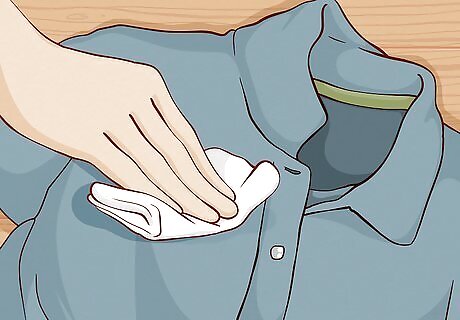
Blot the stain with a paper towel until it is dry. Before attempting to treat a stain, make sure it is completely dry. Be careful, though, since you don’t want to make the stain worse. Scrape any solid matter off gently with a dull knife. Then, use a paper towel to soak up as much of the stain as possible. Treat stains immediately, if possible. The sooner you treat a stain, the easier it is to remove.
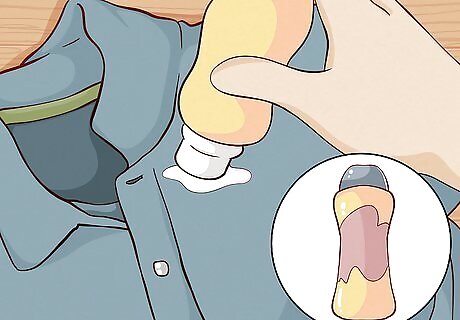
Apply a laundry pre-treatment product to remove most stains. Stain removal products include sprays, sticks, pens, and gels. All you have to do is apply the product until the stain is completely saturated. You can also work the spray into the stain using your finger or a laundry brush. You can buy stain removal products at most general stores.
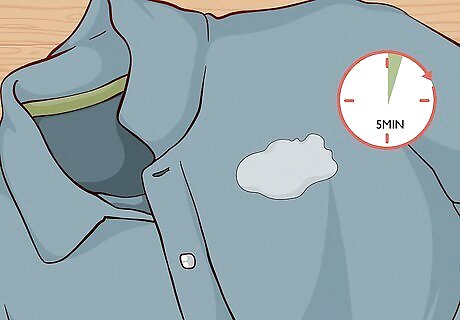
Let the stain removal product soak in for 5 minutes. Check the manufacturer’s instructions on the bottle for the recommended drying time, since this may vary slightly from product to product. The wait time will typically be short. If you’re unsure, wait 5 minutes no matter what. You can then launder the shirt normally to remove the stain and the stain removal product. If you don't plan on washing the entire shirt, rinse the stain removal product off under cold running water.

Soak the stubborn stains in non-chlorine bleach before washing. If your polo shirt still won’t come clean, using bleach is worth the risk. Try using a bleach gel pen, but check the label first. Make sure the product doesn’t include hypochlorite, which may wear out or discolor your polo shirt. Rub the product into the stain and launder the shirt immediately. You can also try adding some all-fabric bleach to your laundry cycle. This may take out stubborn stains if you don’t have a gel pen. Non-chlorine or all-fabric bleach may still damage some polo shirts, so you may want to test the product on an inconspicuous spot first. Oxygenated bleach is useful for brightening shirts that look dull. It’s used the same way as non-chlorine bleach.
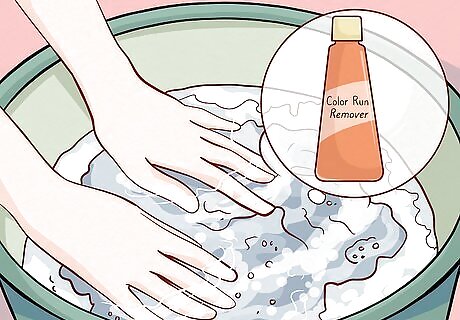
Clean the shirt with a color run remover if dye bleeds onto it. Sometimes light-colored polo shirts pick up dye in the wash when cleaned with other clothing. You may be able to fix this by mixing a color run remover product into water, then soaking the polo in it for several hours. Finish by washing the polo normally with liquid detergent. Your best chances of removing unwanted dye is right when you notice the stain. Once the dye dries, removing it is unlikely. You may also be able to remove dye stains on your own with rubbing alcohol or bleach.
Washing Polo Shirts

Read the washing and drying instructions on the polo’s tag. You can find washing instructions printed on a tag underneath the collar. The manufacturer may offer some specific directions for their product. If you’re ever stuck, you can use those directions to protect your polos as you clean them. All polos can be washed and dried the same general way, which is with cold water and low heat.
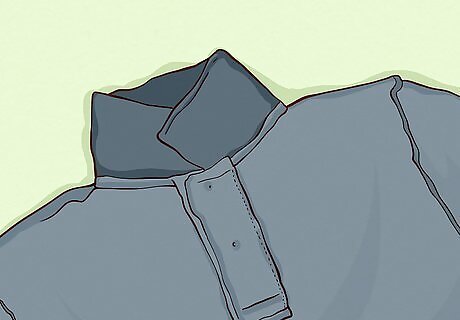
Button the collar, turn the shirt inside out, and lift the collar. A floppy collar is a nuisance, but it is bound to happen after you wash your polo a few times. To prevent this, button the top button on the collar. Now turn the entire polo inside out, then flip the collar up. This should protect it during the washing and drying process. You may also be able to fix a floppy collar by spraying it with starch and ironing it.

Wash the polo with similarly-colored clothing. Putting a polo shirt through a wash cycle is fine, but you have to pay attention to any other clothing you wash with it. Dark colors from other clothing can bleed and discolor light polos. In addition, avoid washing white polos with colored fabric. Polos with white stripes are typically safe to wash with both white and colored clothing. Be careful with red clothing or red-striped polos. Red dyes are the most likely to bleed. You may want to avoid washing red clothing with polos or red-striped polos with white clothing.

Fill the washing machine’s soap tray with a mild liquid detergent. Make sure your detergent is safe to use on delicate clothing. A lot of detergents designed to treat heavy stains are harsh and may even have bleach that can damage a polo shirt. Then, check the manufacturer’s instructions on the soap container to find out how much detergent to add. This depends on how big the laundry load is. Be careful if you use a powdered detergent, since a lot of them are too harsh to be used on polo shirts. You can use bleach on white polos. Check the shirt’s tag. It will likely instruct you to use non-chlorine bleach.

Wash the polo shirt using a cold water cycle. Set your laundry machine for a single cycle using only cold water. The “delicate” or “hand wash” settings some machines have are safe to use. Leave the polo shirt in the machine for the entire cycle and get ready to take it out as soon as it is done. Avoid warm water, since it will wear out your polo shirts over time. Cold water will still get your shirts clean. You can hand wash polo shirts in cold water, but this isn’t recommended since it can cause the dye to bleed a little.
Drying a Polo Shirt

Use a low heat tumble setting if you machine dry your polo shirts. Polo shirts can be dried in a dryer, but always use low heat. You can choose the “delicates” setting if your dryer has it. Be careful if you wear polyester polos, though, since these shirts may be more prone than cotton polos to heat damage. Check the tag for the manufacturer’s recommendations. Remember to keep the polo’s collar up while drying so it retains its shape. If you have the time, you can avoid the risk of damage to your polos by skipping to air drying.
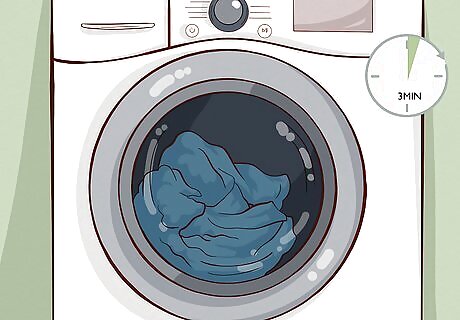
Dry the polo in a dryer for only 2 to 3 minutes if possible. To avoid putting a delicate polo shirt through an entire drying cycle, be prepared to remove the polo almost immediately. If you’re in a rush, you can continue the cycle until your polo shirts are completely dry. However, briefly drying the polo this way gets rid of some of the water without causing heat damage to the fabric. Most wear and tear from machine drying won’t show up right away. The polo may shrink at first, but the heat also can wear out the fabric over time. Instead of machine drying the polo now, you can also choose to throw the polo into the dryer for the last 2 or 3 minutes of the drying process.
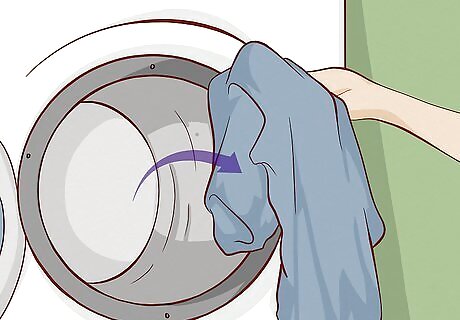
Remove the polo shirt from the dryer immediately after drying it briefly. If the polo is still wet, the fabric will take on some unappealing crinkles. Prepare to finish the drying process as soon as possible. If the polo is completely dry, you won’t have to worry about water damage. However, still try to put the shirt away as soon as you can.

Set wet polos on a towel out of direct sunlight to air dry them. You can do this for both undried and partially-dried polos. Try to pick a warm, exposed area with good air circulation for this. You may want to put the towel near a window or fan to facilitate drying. Direct sunlight weakens and discolors fabric over time, so avoid drying your polos in it. You can also spread the polo on a drying rack instead of a towel.

Allow the polo to dry for about 30 minutes. Place the polo on the towel, spreading it out as much as possible. Flatten the polo as much as you can against the towel. The towel will absorb moisture from any parts of the shirt it contacts. If you have the towel in a good location, the shirt should dry out relatively quickly so you can store it. A polo that has been partially dried in a drying machine may finish drying in about 15 to 25 minutes, although this varies depending on your environment. If the shirt seems to be drying slowly, try flipping it after 15 minutes. This encourages both sides of the shirt to dry at an even rate.

















Comments
0 comment